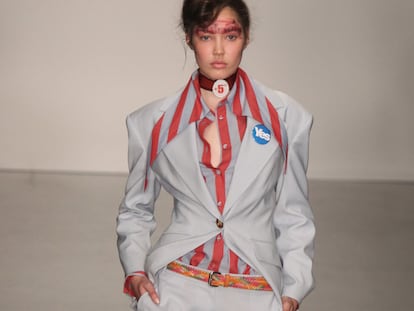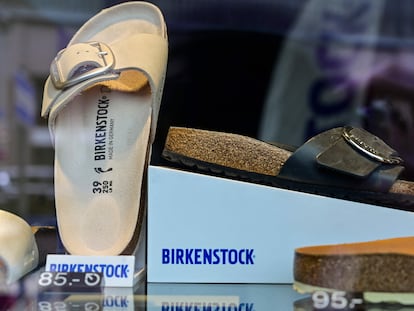The return of the push-up bra: A trend that triumphs on the red carpet, but not so much on the street
Showing cleavage is the latest retro style flaunted by celebrities in all kinds of occasions and at events. Still, the public is showing no intention of following their example
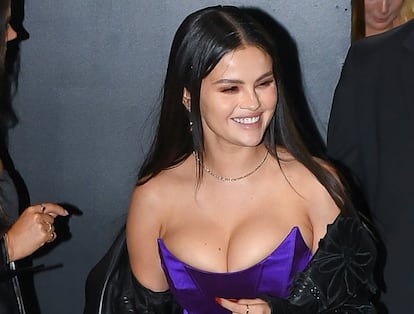
The signs were there, plain as day. If we have already reembraced with varying levels of success most of the trends from the late 1990s and early 2000s, the return of the one that revolves around the cleavage should come as no surprise. In defense of society, we must say that these last few years have not been particularly buoyant for push-ups; but once celebrities spring into action, history begins to change. At least in theory.
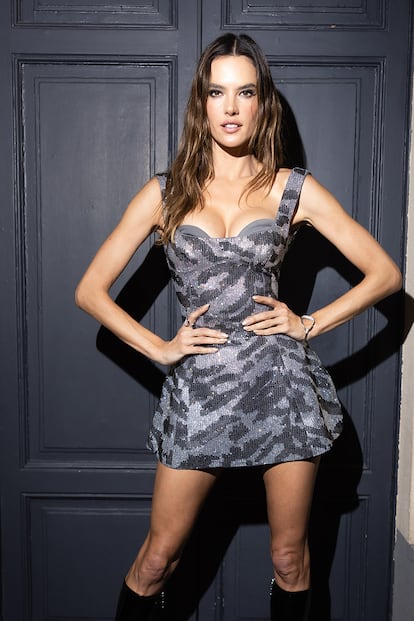
Kylie Jenner’s videos and photos from Paris Fashion Week have gone around the world several times, especially those in which the youngest of the klan arrives at the always viral Schiaparelli show. The absence of decorations helped that area shine more than the sequins on the dress itself. Therein lied the magic of the look: seemingly simple lines that sculpted Jenner’s figure. And the bra? There doesn’t seem to be one. Still, the push-up effect is there.
Olivia Rodrigo sported a very similar look a few days earlier at the MTV Music Video Awards. It was a silver dress made by Ludovic de Saint Sernin in which 150,000 Swarovski crystals sparkled under the lights and flashes. Completing the equation, a V-neckline complemented by a push-up bra evoked the days of the Wonderbra campaign in which Eva Herzigova appeared next to the phrase “Look me in the eyes and tell me that you love me.”
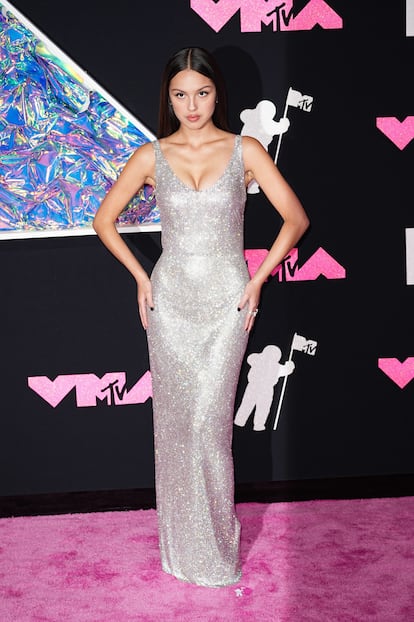
Something similar is happening with Selena Gomez. The performer exposes her cleavage in a large percentage of her outfits: it is part of her and she does not hide it. She did it at Paris Fashion Week with two short dresses: one with polka dot by Jacquemus, and a black one by Versace. She did it on her last birthday, wearing a red minidress full of flowers. She did it at this year’s MTV Awards afterparty, with another intense purple minidress with a corset top that reinforces the push-up effect. She has even done it in Only Murders in the Building (2021), in a scene where she wears a wedding dress with a strapless neckline, a style that she seems to have embraced in recent months: in some photos and videos where she announced a single that she released at the end of August, she also appears with an orange strapless neckline.
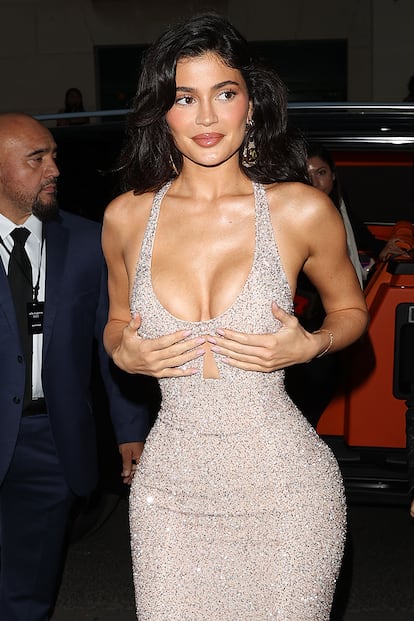
If this list of outfits made you think about Lindsay Lohan in Mean Girls (2004), walking down the stairs in a short black and pink strapless dress, proudly displaying her chest, we don’t blame you. The difference is that in the movie, that gesture — showing part of her chest — came with a series of negative connotations: the femme fatale is dangerous and, depending on how the script paints her, also hollow. Just remember the way that, for years, the industry and the public treated Pamela Anderson, another woman who is now getting a bit of poetic justice. The narrative was clear: you could not show cleavage and be smart at the same time. But what if these young celebrities are helping to change the rules of the game?
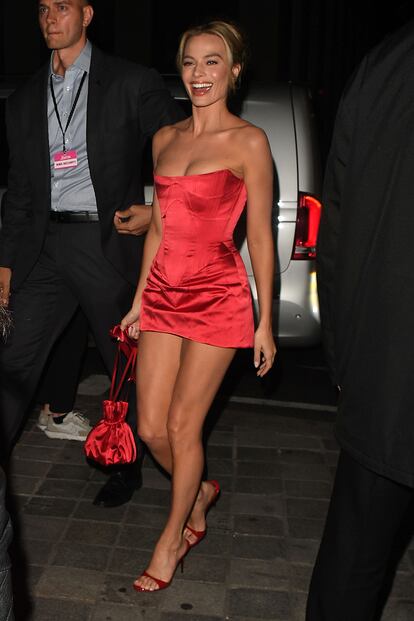
The rise and fall of WonderBra, the flagship firm of push-up bras, is the perfect example of how the relationship of people with breasts and underwear changed: it went from selling a bra every 15 seconds in 1994 (as reported by a study from the University of Michigan Business School) and making more than $120 million in sales, to being hard to find on Google or even Instagram, where they have just over 25,000 followers. In fact, in 2013 there were few offers to buy DBApparel, the group that WonderBra was a part of, and although it was acquired by HanesBrand in 2014, the company’s profit reports were not at all encouraging. Because even though Kate Moss praised the garment in the New York Times Magazine (“They are so brilliant, I swear, even I get cleavage with them”) and Christina Aguilera declared that “everyone should have a great WonderBra,” the truth is that the padding that helped enhance the breasts were no longer exclusive to the firm. Any brand of underwear offered similar models.
Nuria Sarda, creative director of the Andres Sarda lingerie and swimwear brand, says that her clients have not shown a special interest in padded bras. “The push-up sells, but it is not our most successful bra,” she explains. “In recent years, the demand for lighter, more transparent and comfortable garments has increased, and I think that right now it would be difficult for the push-up to become the trend that it was years ago: today comfort is a priority, and naturalness.” Still, she adds, “that doesn’t mean that at a certain moment we can’t wear a push-up if we feel like it, or if it makes a dress look better.”
That may be (part of) the key to this matter: that the bra has become something decorative, an accessory, not an essential part of the look. And one that — let’s not fool ourselves — squeezes certain parts of the breasts, too. Between the Free the Nipple movement that was ubiquitous in 2012, the rise of bralettes in 2016 and the effects of the pandemic on people’s personal styles, the decision to voluntarily constrict the body again seems to arise more from a visual reason than a social one.

Sign up for our weekly newsletter to get more English-language news coverage from EL PAÍS USA Edition
Tu suscripción se está usando en otro dispositivo
¿Quieres añadir otro usuario a tu suscripción?
Si continúas leyendo en este dispositivo, no se podrá leer en el otro.
FlechaTu suscripción se está usando en otro dispositivo y solo puedes acceder a EL PAÍS desde un dispositivo a la vez.
Si quieres compartir tu cuenta, cambia tu suscripción a la modalidad Premium, así podrás añadir otro usuario. Cada uno accederá con su propia cuenta de email, lo que os permitirá personalizar vuestra experiencia en EL PAÍS.
¿Tienes una suscripción de empresa? Accede aquí para contratar más cuentas.
En el caso de no saber quién está usando tu cuenta, te recomendamos cambiar tu contraseña aquí.
Si decides continuar compartiendo tu cuenta, este mensaje se mostrará en tu dispositivo y en el de la otra persona que está usando tu cuenta de forma indefinida, afectando a tu experiencia de lectura. Puedes consultar aquí los términos y condiciones de la suscripción digital.
More information
Archived In
Últimas noticias
Most viewed
- Sinaloa Cartel war is taking its toll on Los Chapitos
- Oona Chaplin: ‘I told James Cameron that I was living in a treehouse and starting a permaculture project with a friend’
- Reinhard Genzel, Nobel laureate in physics: ‘One-minute videos will never give you the truth’
- Why the price of coffee has skyrocketed: from Brazilian plantations to specialty coffee houses
- Silver prices are going crazy: This is what’s fueling the rally
